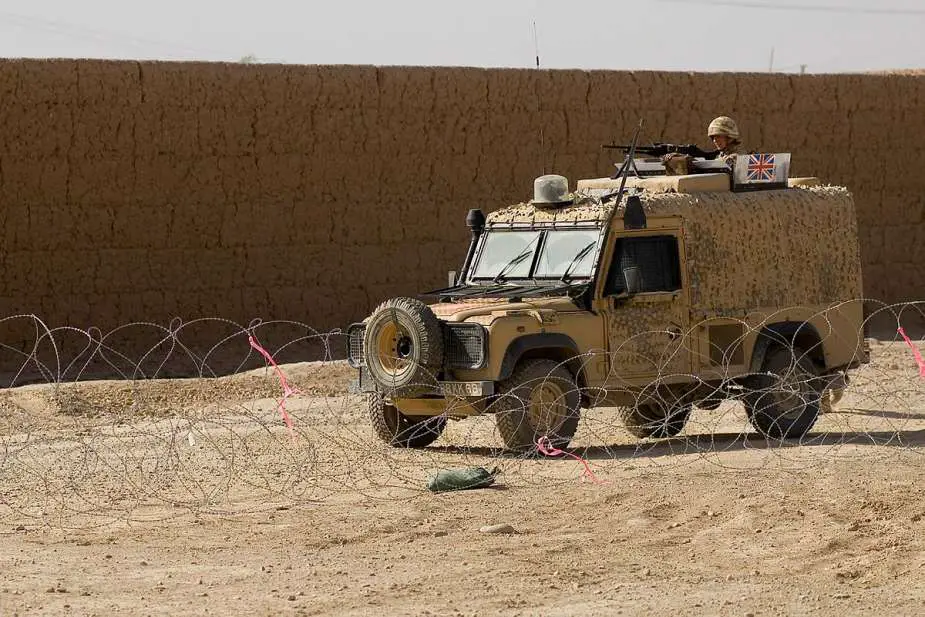Breaking news
British Army's controversial Land Rover Snatch faces potential service life extension.
As reported by the UK Defence Journal on November 21, 2023, the Land Rover Snatch, a controversial armored vehicle utilized by the British Army, is anticipated to undergo an extension of its operational service life beyond March 2024. This development follows an inquiry by the Labour Member of Parliament, Kevan Jones, who sought clarification from the Ministry of Defence regarding the out-of-service date for the Snatch Land Rover vehicles.
Follow Army Recognition on Google News at this link

Despite its initial purpose for general patrolling in low-threat areas, the Land Rover Snatch found deployment in high-threat zones, including Iraq and Afghanistan (Picture source: UK MoD)
In response to Jones' inquiry, James Cartlidge, the Minister of State at the Ministry of Defence, indicated that while the current out-of-service date is slated for March 2024, active efforts are underway to secure an extension for the operational lifespan of the Snatch Land Rover.
Introduced in 1992 as an armored SUV for protected patrol missions in low-threat areas, the Snatch saw its inaugural deployment during the period known as "the Troubles" in Northern Ireland. It played a role in counter-terrorism operations between the Irish Republican Army (IRA) and the British Armed Forces in the 1990s.
Constructed on the upgraded Heavy Duty Land Rover Defender 110 chassis, shared with the Land Rover Wolf, the Snatch initially featured a V8 gasoline engine, later succeeded by the Land Rover 300 TDI engine, generating 111 horsepower. The vehicle was equipped with additional armor to withstand small arms fire. To counter improvised explosive devices (IEDs), the Snatch incorporated electronic countermeasures arrays using electronic jamming technology to potentially disrupt certain types of IED triggers. The Snatch also integrates the Bowman communication system, operating on various frequencies, to facilitate communication between soldiers and the base.
Over the years, the Snatch Land Rover underwent various iterations, including specialized versions such as the Snatch II, designed for basic training, and the Snatch Vixen, the most recent variant engineered to provide enhanced protection for occupants. The Snatch Vixen features composite blast and firearm-resistant armor, an automatic gearbox, a reinforced chassis, and a completely overhauled suspension system.
Despite its initial purpose for general patrolling in low-threat areas, the Snatch found deployment in high-threat zones, including Iraq and Afghanistan, where it was utilized for patrolling, troop transport, and prisoner transports. Its perceived lack of protection in these environments earned it the moniker "Mobile Coffin" among troops, particularly after several losses in Iraq and Afghanistan.
The vehicle's reputation faced additional scrutiny as families of servicemen killed in Snatch initiated legal action against the Ministry of Defence. This led to a reassessment of the Snatch Land Rover's efficacy compared to other military vehicles with perceived superior protective capabilities, such as the Cougar and Mastiff MRAP (Mine Resistant Ambush Protected) vehicles. Consequently, then-British Prime Minister Gordon Brown announced in March 2010 the intention to replace the Snatch Land Rover with a new light patrol vehicle, the Foxhound. This decision aimed to address the controversies surrounding the Snatch's performance in high-threat environments and its associated reputation.


























